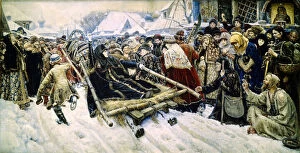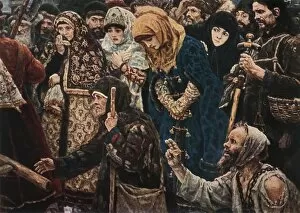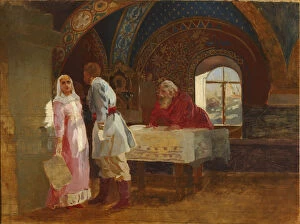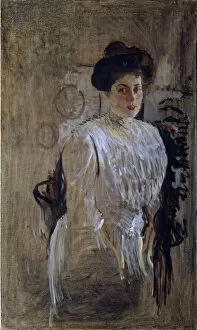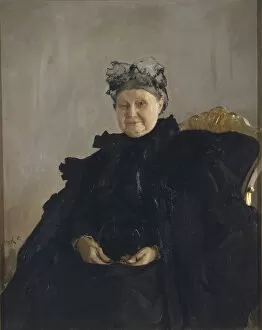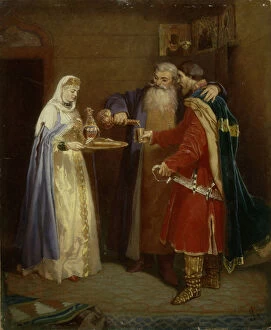Morozova Collection
Vasily Surikov's iconic painting, "The Boyar Morozova" (1887), immortalizes the grandeur and opulence of 17th century Russian aristocracy
All Professionally Made to Order for Quick Shipping
Vasily Surikov's iconic painting, "The Boyar Morozova" (1887), immortalizes the grandeur and opulence of 17th century Russian aristocracy. Depicting Morozova, a wealthy boyar, and his wife, this masterpiece is a testament to their power and status. Surikov also painted studies for the work, including "The Boyar Morozova (a study)" (1881). In a separate portrait, Zavaruev captured Varvara Alexandrovna Morozova, nee Khludova, in 1865. The Morozov family continued to intrigue artists, with Valentin Serov painting portraits of Margarita Kirillovna Morozova, nee Mamontova (1910), and Maria Fyodorovna Morozova, nee Simonova (1897). Schwarz's "Boyars welcome (Prince Serebrenni visiting Boyar Morozov)" (1865) and Buchholz's "The Kiss Ceremony. Boyar Morozov, his Wife Yelena and Prince Serebrenni" (1882) further explore the intricate dynamics of the Russian nobility. Vinogradov's "Portrait of Jevdokia Sergeyevna Morozova" (1918) offers a glimpse into the Morozov family during a later era. Through these works, the legacy of the Morozovs lives on, a symbol of Russia's rich artistic and historical heritage.

